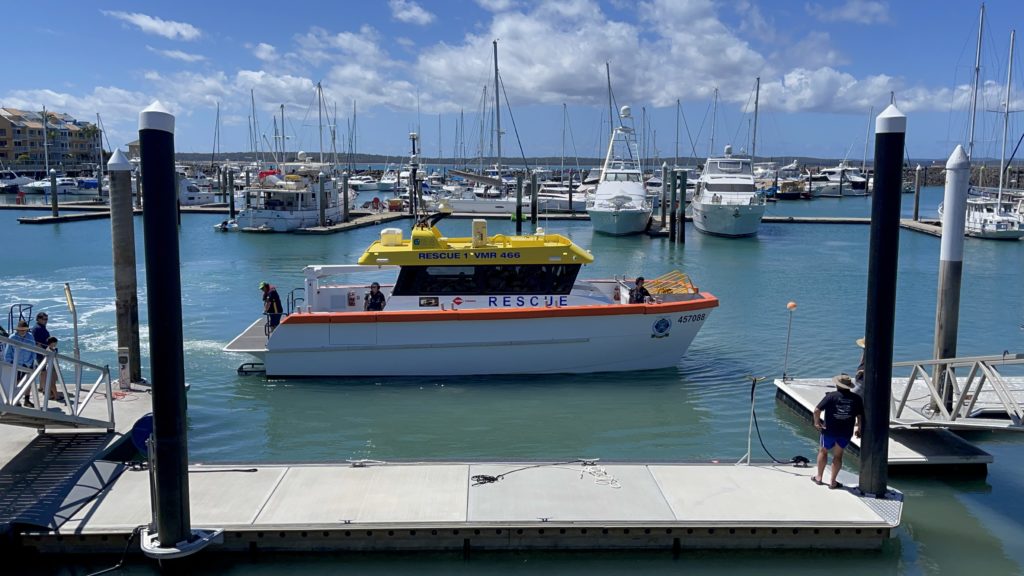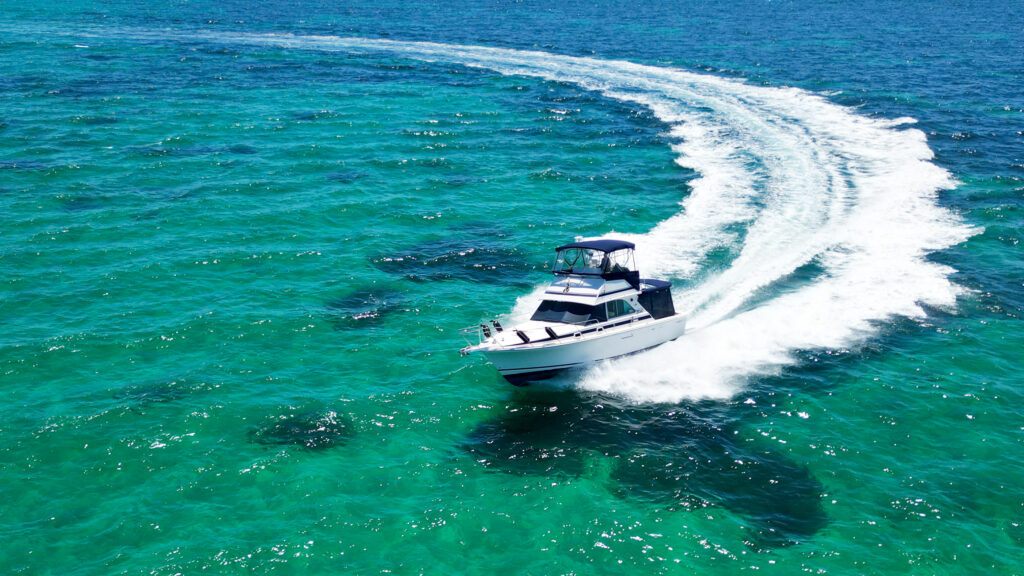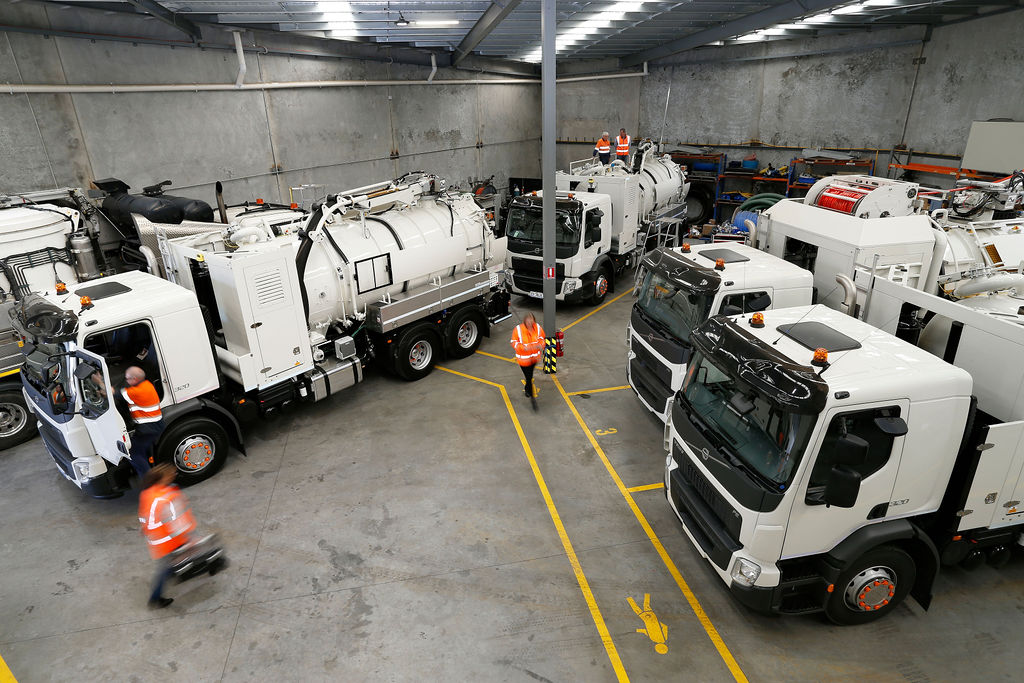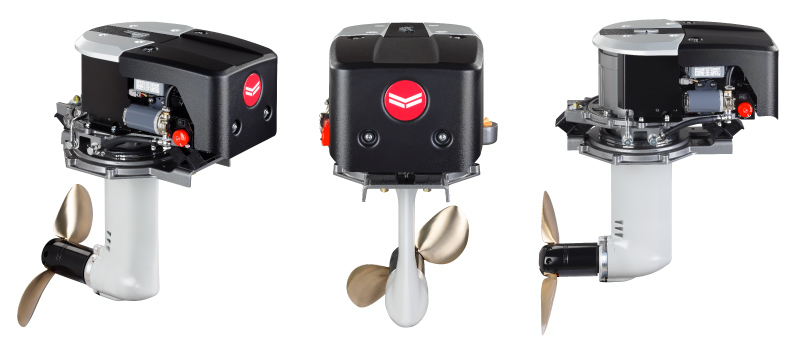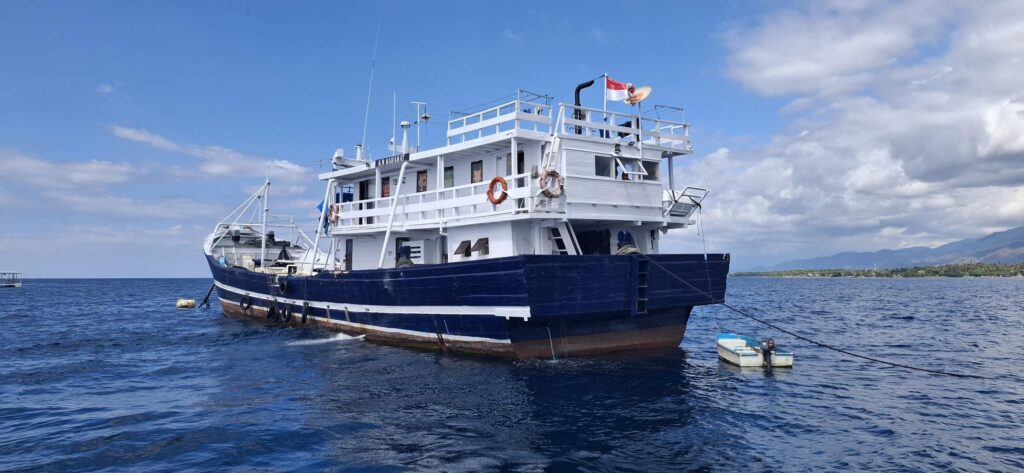As the primary response vessel for Marine Rescue Hervey Bay, Rescue 1 has combined impressive technology onboard for search and rescue capability with the class-leading technology of Yanmar’s 6LY440 common rail diesel engines. It is a match that has delivered one of the more advanced and capable vessels of its kind in Australia.
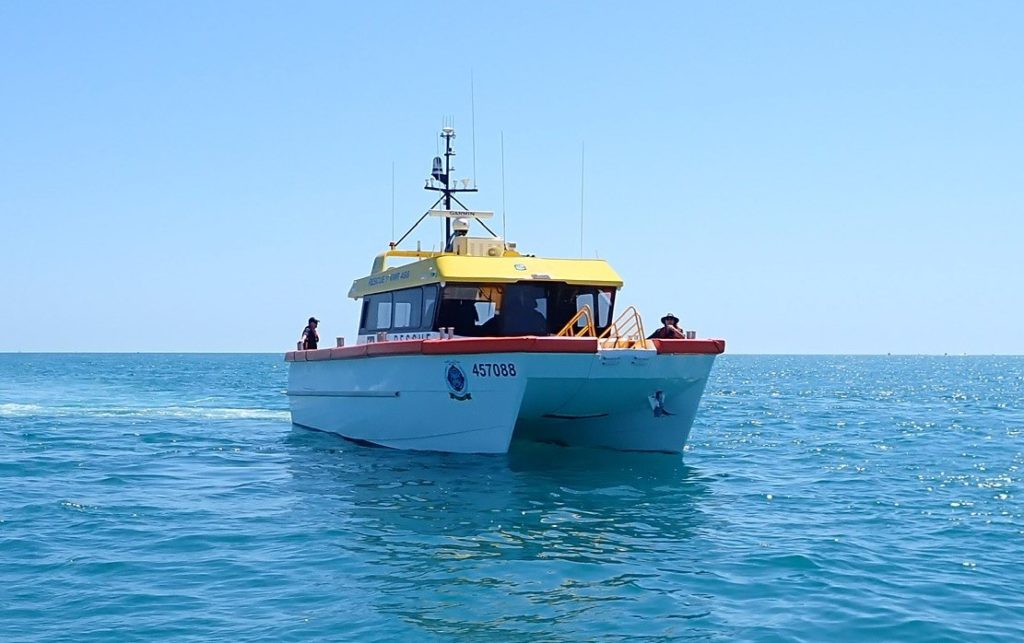
Rescue 1 – Marine Rescue Hervey Bay’s new catamaran primary response vessel – literally bristles with new technology and is proudly propelled by the clean, efficient power of twin Yanmar 6LY440 common rail engines.
This volunteer marine rescue group’s newest boat is able to tow stricken vessels anywhere in their 5,000sq km area of operations, and it has already attended to several medical evacuations from K’Gari (Fraser Island) on Queensland’s east coast.
Marine Rescue Hervey Bay Commodore Graeme Davies has had the chance to skipper one of those medivacs.
“When we have a northerly, conditions on the top end of the Sandy Straits and off the top end of Fraser Island, (all within his rescue group’s coverage area), can get a bit uncomfortable,” Graeme tells Power Equipment.
“The Blue Arrow computer-based control system of this vessel is really quite brilliant – if you can operate a computer mouse and move a cursor on a screen, those skills are a good starting point to position this boat wherever and however you like.
“That’s really handy when you’re trying to position up against a difficult jetty landing to transfer a patient – and those kinds of operations are nearly always happening at night, so being able to position the boat easily and keep it in one spot is fantastic.”
Rescue 1 is a Naval Architects Australia designed power cat with a length just under 12 metres and a beefy 5.3metre beam.
Its Yanmar 6LY’s are close-coupled to ZF280 gearboxes (1.30:1 ratios) and driving Hamilton HJ292 jet units. Built in Maryborough by Allweld Manufacturing, (just inland from Hervey Bay), the finished vessel came off the scales at 11.2tonnes lightship with up to 12mm aluminium used in her hull and frame construction.
Rescue 1 is definitely no recreational toy! Josh Linwood of Allweld Manufacturing – a veteran business in precision aluminium design and boat building – admits the electrical and electronics fit out of Rescue 1 was no easy job, “but the Yanmars and the jets were simple to fit.”
In most respects a “plug and play” engine, you will hear the same story from many boat builders who have installed the 6LY440 Yanmar into any build – simple wiring loom setups that can integrate with just about any system. That’s a superb advantage also with electronic helm controls and monitoring.
To balance the boat’s design properly, the Yanmars were required to be positioned with a 500mm drive shaft to the jet units at the stern, with the engines on a slight backwards angle to accommodate this drive setup.
“We built 20mm solid plate engine beds and attached engine mounts to that,” explained Josh. “They are easily getting 30 knots out of the Yanmars, but I believe they will probably get closer to 32knots at full throttle.”
That’s no small feat from the 6LY’s – given that Rescue 1 is closer to 13 tonnes in the water all up with fuel (twin 810litre tanks), equipment and personnel. Outstanding performance of the 6LY440’s is an experience Power Equipment has seen mirrored in new builds and refits in other vessels around the country – with power-to-weight that is class-leading and fuel economy that leaves other engines in its wake.
The 324kW (440mhp @ 3,300rpm) 6LY440 is a 5.8 litre engine and utilises Yanmar’s famous six-in-line block that has been the basis of the LY2 and LY3 series engines for around two decades.
Another class-winning factor of the 6LY is its compact size, made possible through a shorter bore and stroke (106mm X 110mm). This allows for better engine room fits and easier access all round – a key bonus particularly in a catamaran build like Rescue 1.
The 6LY440’s will be having as little impact as possible on the pristine waters of the Fraser coast too with their impressive emissions credentials. These engines meet European RCD2, IMO/GL and EMC standards along with US EPA Tier 3 accreditation.
High-tech engines for a high-tech rescue vessel
Whilst electronic control is giving the Yanmars powering Rescue 1 an obvious advantage, the vessel’s other control systems and layout are also a reflection of forward thinking.
The bow of Rescue 1 includes an integrated droppable gangway for ease of retrievals and egress, whilst a 12volt davit on the aft deck can swing either a jetski aboard to save towing or other equipment if required. The vessel can also cradle its own jetski for deployment on search and rescue in tighter mangrove creek and shallow tidal areas.
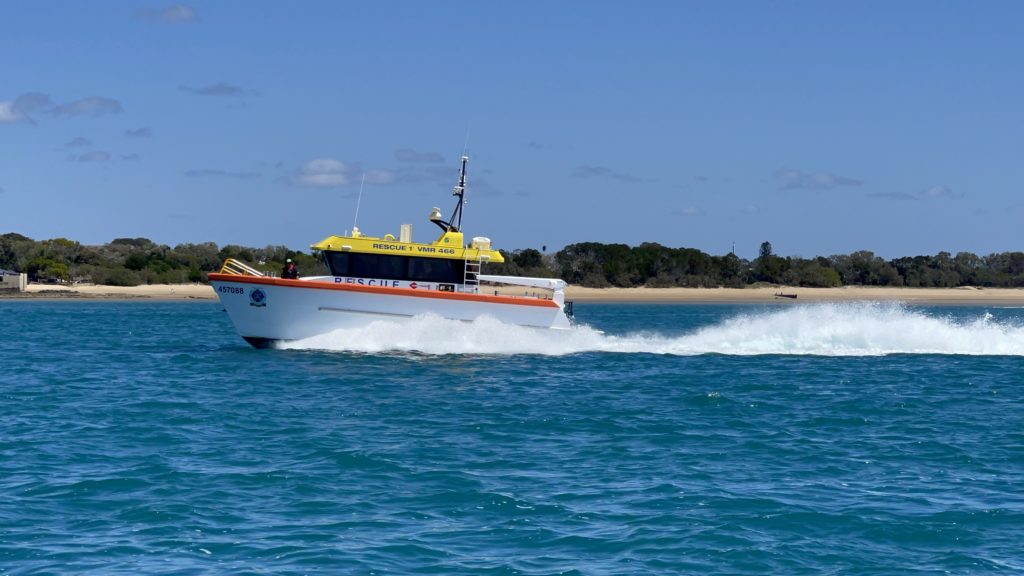
While the Blue Arrow control system has coupled well with the Yanmars and jets, the onboard technology doesn’t stop there! All crew wear intercom headsets and microphones, keeping all onboard, (whether out on the deck or in the wheelhouse/helm area), connected at all times. This intercom system is even broadcasting VHF radio communications to all crew, keeping everyone up to date.
Graeme also explains that a stand-alone chart plotter and radio comms station (separate from the helm) at an aft station within the wheelhouse also caters for an on-scene coordinator during search and rescue operations. This helps keep the skipper’s tasks focused on operating the vessel.
“Our previous vessels have basically been larger recreational boats fitted for the job,” Graeme explained, “but Rescue 1 is purpose-built and it really is streets ahead in ability, safety and comfort for crew, paramedics or those we rescue.”
“We were involved in a search and rescue practice exercise recently involving about 80 people and five search and rescue agencies – including three local Maring Rescue/Coastguard groups, the SES and Queensland Water Police,” he said.
“Having our on-scene coordinator able to do their job and control communications and other operations separate from the helm makes a huge difference.”
All lighting within the wheelhouse is dimmable, while other slightly ‘lower-tech’ inclusions have helped make Rescue 1 better able to deliver people to safety.
“Blackout curtaining around the helm and navigation stations can make a first responder’s or paramedic’s job much easier in the wheelhouse because that area can be lit up brightly for them to work on a patient while the skipper doesn’t have their night vision affected while underway,” Graeme explains.
It’s obvious a lot of thought went into the 6 years of planning and development for this $1.5million vessel – with her true potential and abilities yet to be fully utilised.
“We don’t have comprehensive fuel consumption figures on the Yanmars yet, but I can say that I ran the vessel over to Fraser Island at a consistent 22 knots recently. Subsequently another skipper did the same trip in similar conditions at a cruise speed of 26knots and I believe the vessel actually used less fuel on that faster trip – we’re looking forward to seeing what these engines will deliver.”
Volunteers and donations made Rescue 1 a reality
As the Commodore of Marine Rescue Hervey Bay, Graeme Davies is always keen to acknowledge the efforts of those who got them to where they are with this new boat, such as former Commodore John Smith, and the donations of volunteers and supporters towards keeping their vessels afloat.
Rescue 1 was funded through huge efforts in fundraising, generous donations and “countless raffles and sausage sizzles.”
“I would like to express special thanks to Hand Heart Pocket – the Charity of Freemasons Queensland who made an extra-large contribution,” Graeme said.
“A couple of years back, a member of a local Freemasons group came to us and said “how much do you need to get the boat built?”
“We told them we still needed to raise $400,000. They went away and successfully championed our cause to Hand Heart Pocket – it was amazing and was the biggest help towards making the project a reality.”

